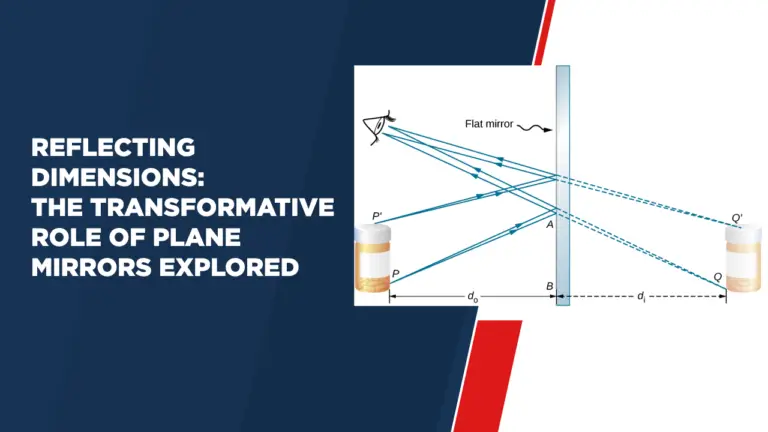Reflecting Dimensions: The Transformative Role of Plane Mirrors Explored
Introduction
When it comes to optical instruments that play essential roles in our daily lives, plane mirrors often take center stage. These deceptively simple pieces of glass have myriad applications and contribute significantly to our understanding of light and reflection. In this article, we’ll delve deeper into the world of plane mirrors and find out how they form images, their focal lengths, and their wide range of uses.
What is a Plane Mirror?
Plane mirror, commonly known as flat mirror, is a type of mirror whose reflective surface is smooth and flat. Unlike curved mirrors that bend light, plane mirrors reflect light rays without any distortion, producing a clear virtual image that is similar in shape to the object being reflected.
Image Formation by Plane Mirror
The image formed by a plane mirror is a fascinating phenomenon. When an object is placed in front of a plane mirror, the mirror reflects the light rays falling on it. These reflected rays appear to emerge from behind the mirror, creating a virtual image. The image appears at the same distance behind the mirror as the object is in front of the mirror. Additionally, the image is laterally inverted, meaning the left and right are switched. This phenomenon is applied in various optical instruments and artistic expressions.
Focal Length of a Plane Mirror
Unlike concave and convex mirrors, which have distinct focal points, plane mirrors do not have a focal point in the traditional sense. The focal length of a plane mirror is assumed to be infinity. This is because unlike curved mirrors, parallel rays of light do not converge or diverge after reflection. This concept further reinforces the idea that plane mirrors produce virtual images at the same distance as the object.
Uses of Plane Mirrors
The versatility of plane mirrors is suitable for a wide range of practical applications. One of the most common uses is in dressing rooms and bathrooms, where they help us see ourselves from all angles. Plane mirrors are also used in periscopes, allowing submarines and tanks to see objects above the surface without exposing themselves. In the field of optical instruments, beam splitters and kaleidoscopes use the reflective properties of plane mirrors to achieve their intended functions. Artists also use lateral inversion of plane mirrors to create interesting visual effects in their work.
Conclusion
Plane mirrors may look simple, but their contribution in various fields cannot be denied. From helping us look our best to enabling sophisticated optical devices, their reflective properties have a profound impact on our lives. Understanding how images are formed by plane mirrors and their unique features like infinite focal length increases our appreciation for these simple but essential pieces of technology.




